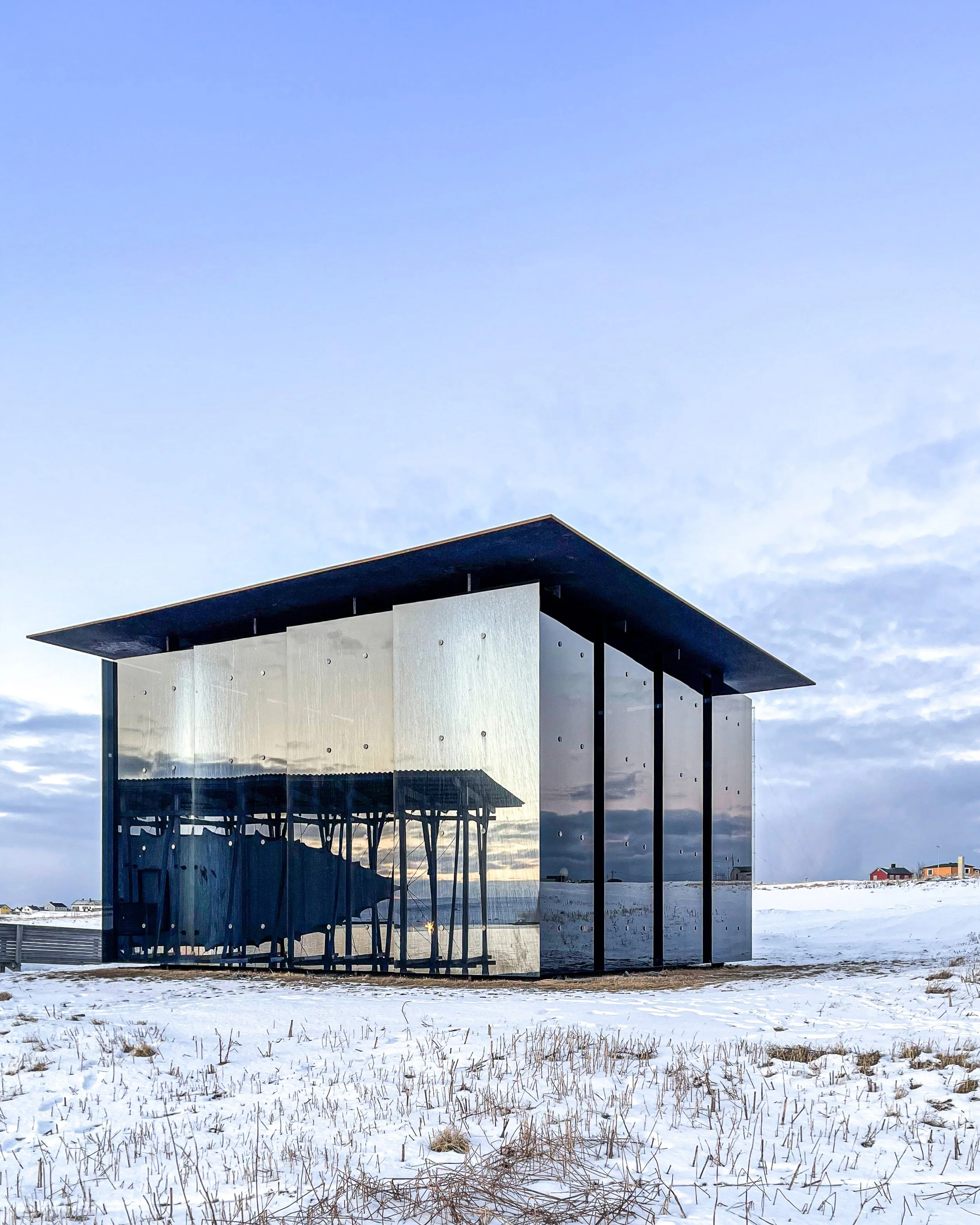
Lusíada University of Lisbon | 24.10
*
Serralves Foundation | 25.10
*
Lusíada University of Lisbon | 24.10 * Serralves Foundation | 25.10 *
5 flames
The Steilneset Memorial in Vardø, Norway, comprises three significant themes: history embodied by Liv Helene Willumsen, art represented by Louise Bourgeois, and architecture represented by Peter Zumthor.
The Folklore Project is a transdisciplinary and experimental case study. The idea for this project arose during intense research for Andrea’s master's thesis and seeks to understand the impact of the memorial through its interrelationship with other closely related artistic expressions — theoretical architecture, visual arts, music, landscape architecture and art history.
The event brings together five of the world's most prominent women in five distinct artistic fields: Andreia Garcia (theoretical architecture), Fernanda Fragateiro (visual arts), Haley Fohr (music), Jenny Osuldsen (landscape architecture) and Maggie Wright (art history — director of The Easton Foundation / Louise Bourgeois Archive). This new perspective allows for a unique involvement with the memorial and its surroundings.
The creative process of the five artists will be documented. This documentation will present a multifaceted visual narrative, which will provide a more profound understanding of how architecture and the other arts can together evoke and preserve memory. By combining these perspectives, the project will give a deeper reflection on how we connect and remember, emphasizing the power of space to contain and reflect on human experiences.
The date chosen for this artistic experience cannot be any other than March 8, 2025, International Women's Day, which is commemorated by the people of Vardø because of its historical significance. It is also celebrated in many other places around the world.
5 artists
Theoretical architecture by Andreia Garcia, visual arts by Fernanda Fragateiro, music by Haley Fohr, landscape architecture by Jenny Osuldsen, and art history by Maggie Wright.
The Steilneset Memorial
In Vardø, witch trials that took place between 1600 and 1692 are considered a dramatic milestone in Norwegian history. These trials were influenced by several environmental, religious, and local factors.
The harsh winters and poor harvests of the Little Ice Age exacerbated social anxiety, which led people to attribute their problems to witchcraft. Vardø's isolation as a trading post significantly heightened apprehensions and rumours.
In the Finnmark region, two ethnic groups lived side by side, the Sami people and the Norwegian people. During the witchcraft trials, Norwegian women were in the absolute majority among the victims. However, some Sami men and women were also accused. Under strict Danish law, the judicial procedure was based on forced confessions and inadmissible evidence. The trials resulted in the execution of 91 people, which became a symbol of historical injustice.
The Steilneset Memorial is a profound collaboration between French-American sculptor Louise Bourgeois and Swiss architect Peter Zumthor, which pays tribute to the victims of the past and provides food for thought about the dangers of intolerance and superstition. Professor Liv Helene Willumsen is responsible for the History component of Steilneset Memorial. She has written 91 commemoratory texts, one text for each victim of the Finnmark witchcraft trials.
This memorial represents a poetic dialogue between history, place, memory, art and architecture, resonating with the whispers of the 91 souls it commemorates.
Norwegian Scenic Routes is a nationwide project, and the Steilneset Memorial is owned by the Director General of the Norwegian Public Roads Administration. This is one of the Norwegian Scenic Routes´ most important projects throughout 30-year history.
The result is really about two things — there is a line, which is mine, and a dot, which is hers… Louise’s installation is more about the burning and the aggression, and my installation is more about the life and the emotions.
Zumthor describes his collaboration with Bourgeois.
Peter Zumthor, renowned for his mastery of light and materials, has crafted The Long House, a sleek and ethereal structure that extends along the coastline. Its form, which appears to be simple but profound, is suspended from a steel frame, covered in a translucent fabric that sways gently in the wind, recalling the spectral presence of those lost in history. Inside, there is a dimly lit corridor with 91 windows, each with a light bulb. These small points of light penetrate the darkness, each representing a life that has passed or a name that has been lost in time. The fabric walls allow the external elements to interact with the space, linking the past to the present, the natural world to human pain.
Bourgeois's The Damned, The Possessed, and The Beloved create a visceral focal point. A solitary metal chair is imprisoned within a glass cube, igniting incessantly. The surrounding mirrors capture and multiply the flames, revealing the agony and suffering of the condemned. Through being reflected in the mirrors, the viewer is forced to confront their shared capacity for cruelty and compassion.





















